We are sad to report the death of Markas Javičius. He was born in 1938 and was a member of the Kaunas Jewish Community, and a client of the LJC Saul Kagan Social Welfare Center. We extend our deepest condolences to his wife, son and many friends and family members.
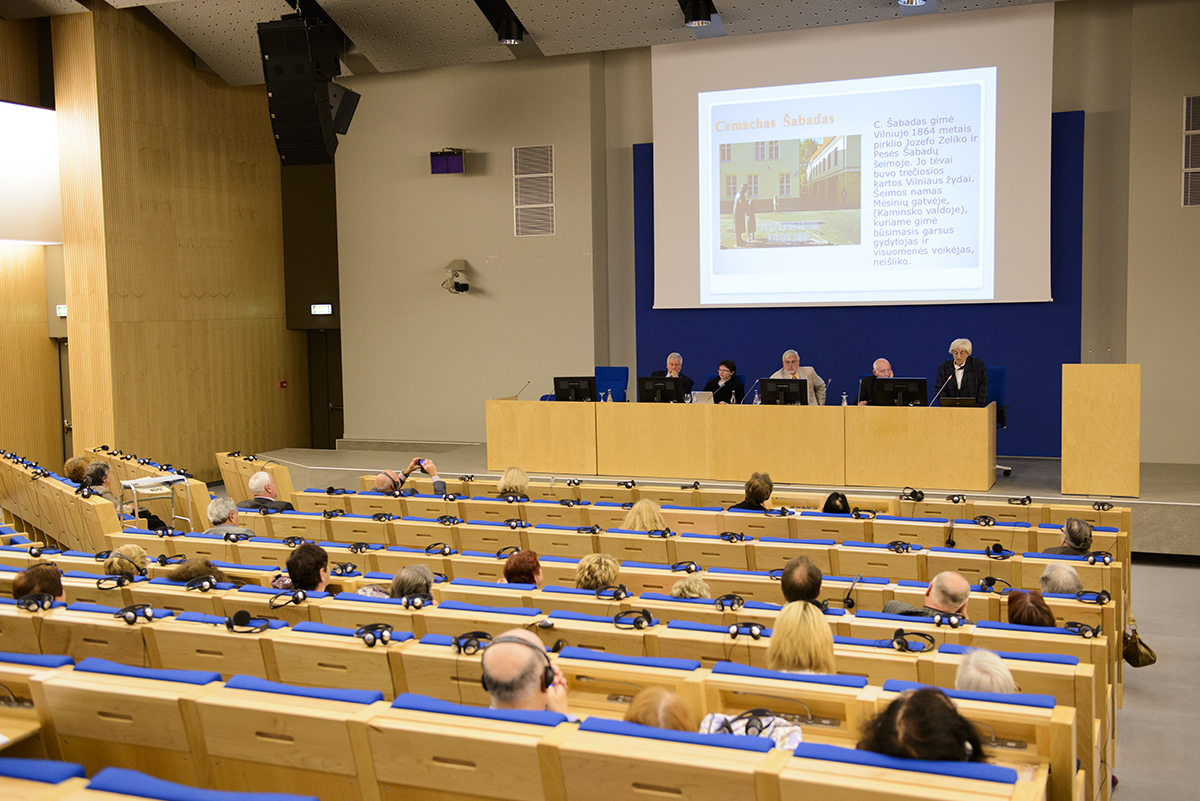
Eightieth Anniversary of Liquidation and Uprising of Vilnius Ghetto: International Conference “Ideologies of Hate and Hope in Modern Jewish History”
You’re invited to the final event in our commemoration of the 80th anniversary of liquidation of the Vilnius ghetto this year, the international conference “Ideologies of Hate and Hope in Modern Jewish History” in Constitution Hall in Building 1 at the Lithuanian parliament on Tuesday, November 28, 2023.
Participants must register by internet before 3:00 P.M. on Monday, November 27, here: https://bit.ly/40NAUZ3
The conference will be conducted in Lithuanian and English with translations. It is being held through the efforts of the Polish Jewish History Institute, YIVO and the Lithuanian Jewish Community. It will be streamed on the LJC’s facebook page.
Program:
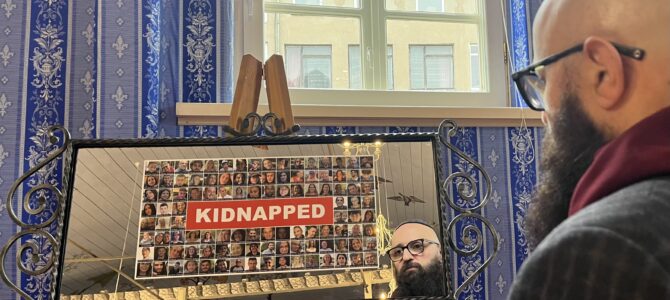
Standing with Israel in Pakruojis
The Pakruojis wooden synagogue hosted an event yesterday to support Israel, organized by the Šiauliai Jewish Religious Community.
Before the Holocaust the wooden synagogue–one of only a handful still standing in Europe–was the center of Jewish life and religion.
The one-day photography exhibit there was actually two related exhibits: 22 photographs out of the 724 victims to mark the 80th anniversary of the Kinder Aktion or children’s mass murder operation in the Šiauliai ghetto collected and arranged by the Yad Vashem Holocaust Authority in Israel and the Šiauliai Jewish Religious Community, and pictures of the 242 hostages taken by Hamas in the Gaza Strip, including babies, children, adolescents, adults and the elderly.
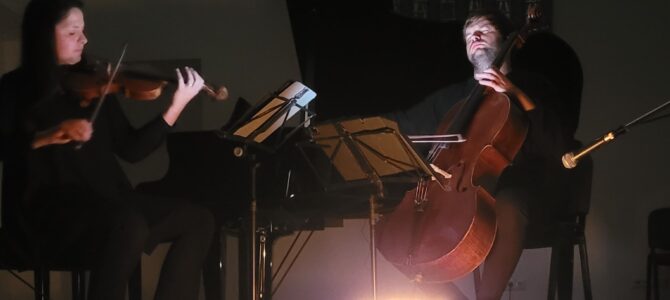
Darna Festival a Success
Thank you to all the participants and attendees for making this year’s Darna Festival to celebrate the International Day of Tolerance a success.
Some snapshots from the festival:
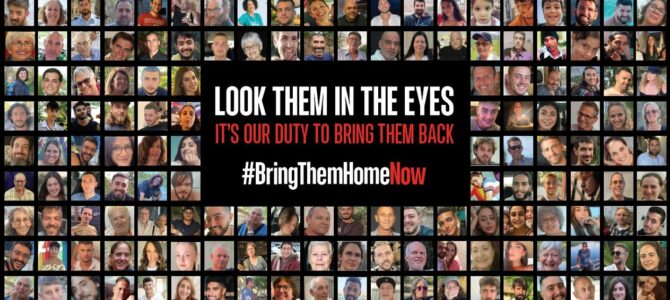
Pakruojis Wooden Synagogue Hosts Photo Exhibit on Kinder Aktion and Hamas Hostages
The Šiauliai Jewish Community is holding a half-day photography exhibit at the wooden synagogue in Pakruojis on November 20 detailing the painful past of the Jewish people and current events.
The first part of the exhibit is a joint project between the Šiauliai Religious Jewish Community and Yad Vashem in Jerusalem to mark the 80th anniversary of the Kinder Aktion or children’s mass murder operation at the Šiauliai ghetto. It only contains a small number of photographs of victims conserved by the Yad Vashem Holocaust Memorial.
The second section features the 240 people taken hostage by Hamas and held in the Gaza Strip, including fathers, mothers, children, teenagers, the elderly and the disabled.
Time: 11:00 A.M. to 5:00 P.M., Monday, November 20
Place: Pakruojis synagogue, Kranto street no. 8, Pakruojis, Lithuania
Condolences
We are sad to report the death of Boris Pojurovskis in September. He was born in 1936. We extend our deepest condolences to his wife, daughter Eleonora and grandson Artūras as well as to his many other relatives and friends.
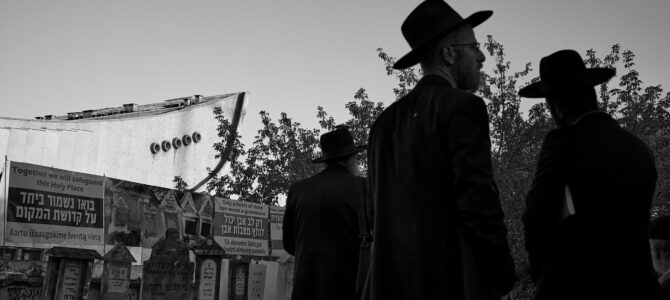
Darna Festival: Three Extraordinary Photography Exhibits
The Darna Festival happening this Thursday, November 16, to celebrate the International Day of Tolerance will feature three exceptional photography exhibits featuring work by Antanas Sutkus, Andrey Kezzyn and Bartosz Frątczak. All festival events and performances are free and open to the public.
Time: 6:30 P.M., Thursday, November 16
Place: Third floor, Lithuanian Jewish Community, Pylimo street no. 4, Vilnius
Antanas Sutkus is considered one of the top Lithuanian photographers of the 20th century. Andrey Kezzyn over the past decade has been staging theatrical photographs with actors in costume, and is a stage director himself. Bartosz Frątczak lives in Vilnius and is a teacher, philosopher and journalist as well as photographer. From 2014 to 2018 Frątczak photographed Holocaust survivors and family members, and rescuers. From 2017 to 2019 he documented living Polish World War II veterans.
#Atmintis #Memory #AEPJ
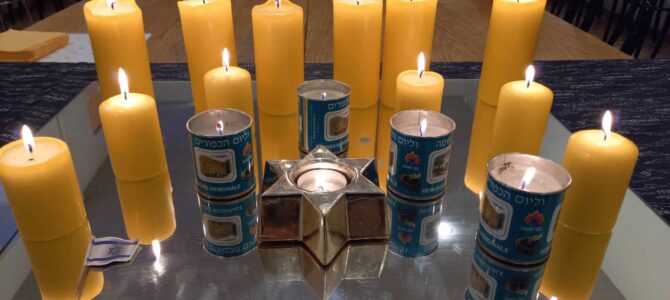
Seniors Club Prays for Israel
The Abi Men Zet Zich Seniors Club meets regularly on Wednesdays and last Wednesday fell on the one-month anniversary of Hamas’s attack on Israel. Many club members have family in Israel and some serve in the military. Our seniors, many of them Holocaust survivors, lit candles and said kaddish for the Israeli soldiers who have died and for the hostages.
Am Yisrael khai.
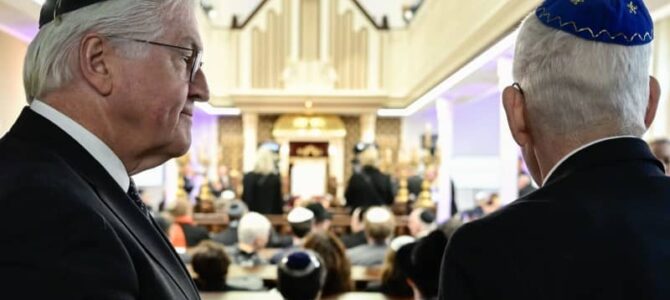
German Chancellor, President Mark Kristallnacht at Berlin Synagogue Firebombed Last Month
Photo: German president Frank-Walter Steinmeier and chancellor Olaf Sholz attended a ceremony to commemorate the 85th anniversary of the Kristallnacht pogroms at the synagogue of the Kahal Adass Jisroel Jewish complex attacked by Molotov cocktails last month.
BERLIN (AP)–Across Germany, in schools, city halls, synagogues, churches and parliament, people came together Thursday to commemorate the 85th anniversary of Kristallnacht or the Night of Broken Glass in 1938 in which the Nazis terrorized Jews throughout Germany and Austria.
Chancellor Olaf Scholz and Germany’s main Jewish leader Josef Schuster spoke at an anniversary ceremony at a Berlin synagogue that was attacked with firebombs last month.
“Jews have been particularly affected by exclusion for centuries,” Scholz said in his speech.
“Still and again here in our democratic Germany, and that after the breach of civilization committed by Germans in the Shoah,” they are being discriminated against, the chancellor added.
“That is a disgrace. It outrages and shames me deeply,” Scholz said. “Any form of anti-Semitism poisons our society. We do not tolerate it.”

One Hundred and Two Holocaust Survivors Ask Australians to Denounce Anti-Semitism and Hatred
Photo: Members of the Australian Jewish community participate in a rally in Sydney in late October. Photograph: David Gray/AFP/Getty Images
by Daisy Dumas, November 9, 2023
The broader Jewish community in Australia this week marked 30 days since the October 7 Hamas attacks with vigils and candle-lighting ceremonies
More than 100 Australian Holocaust survivors have united to denounce a wave of “senseless and virulent” anti-Semitism that they fear is growing in the country.
The “last witnesses to the unspeakable horrors of the Nazi regime,” many in their 90s, have penned a letter against abusive incidents that have targeted the Jewish community as Israeli retaliations continue after the brutal Hamas attacks and kidnappings of October 7.
“We are witnesses to the anti-Semitic propaganda that turned our friends, neighbors and the general public against us in Europe. We remember the six million Jewish lives lost because of this hatred,” the 102 Australian survivors wrote in the letter published in the Australian on Thursday.
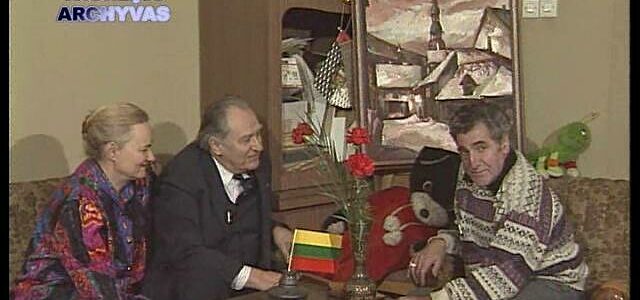
Ąžuoliukas Choir at Concert Celebrating 100th Birthday of Herman Perelstein
The Ąžuoliukas choir performed at an event held by the Kaunas Jewish Community, the Kaunas city municipality and the Kaunas State Philharmonic to celebrate the 100th birthday of the late Herman Perelstein, the founder of the choir, at the Kaunas State Philharmonic on the evening of November 6, 2023. A short video filmed by a member of the audience has been posted to youtube, viewable below of the choir’s performance with Kaunas Jewish Community chairman Gercas Žakas’s introductory address.
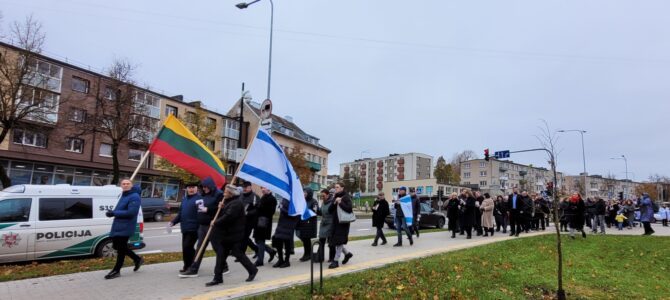
Shavl Kinder Aktion Remembered
On November 6, 1943, around 725 Jewish children were abducted from the Šiauliai (Shavl) ghetto and sent to their deaths in Auschwitz.
Lithuanian Jewish Community chairwoman Faina Kukliansky, chairmen from the Šiauliai, Kaunas, Palanga, Panevėžys and Švenčionys Jewish Communities, Israeli ambassador Hadas Wittenberg-Silverstein, German ambassador Cornelius Zimmermann, Lithuanian MPs and members of the Jewish Community and general public and students and teachers came together to mark the 80th anniversary of this atrocity in Šiauliai November 6.
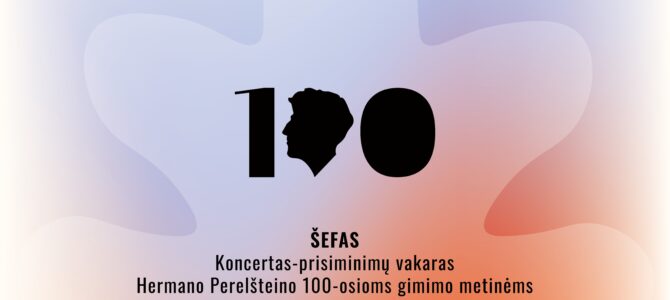
Kaunas Jewish Community Holding Concert to Commemorate Herman Perelstein
The Kaunas Jewish Community is holding a concert to celebrate the 100th birthday of Herman Perelstein, the renowned choir director and professor. The concert and birthday party is being called Šefas, Lithuanian for boss. It happens at 7:00 P.M. Monday, November 6, at the Kaunas State Philharmonic, Ožeškienės street no. 12, Kaunas. It will include a performance by the Ąžuoliukas boys choir Perelstein founded, other performances and recollections from students about the man. It is free and open to the public. The Kaunas Jewish Community thanks the Kaunas city municipality and Goodwill Foundation for making this event possible.
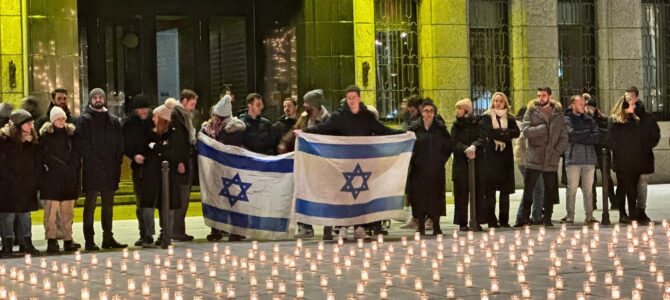
Grosse Aktion Marked in Kaunas
Members of the Kaunas Jewish Community and the general public turned out on the last weekend in October to mark the anniversary of the Grossaktion, the mass murder operation during which around 10,000 Jews were taken from the Kaunas ghetto and murdered at the Ninth Fort in a 25-hour period on October 28 and 29, 1941.
The entire population of the Kaunas ghetto was assembled on Democrat Square inside the ghetto where Gestapo officer Helmut Rauca personally selected many of the victims. Rauca later found refuge in Canada, where he opened a holiday resort on a lake in Ontario. He was never tried.
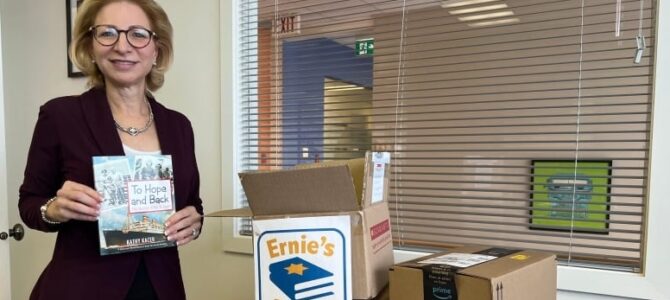
British Columbia, Ontario Make Holocaust Education in Middle, High School Mandatory
Photo: Marilyn Sinclair’s Holocaust education group Liberation 75 is sending free copies of a middle school title To Hope and Back: The Journey of the St. Louis to 6th grade classrooms across Ontario as part of an initiative named for her father Ernie, a Holocaust survivor. Photo by Nazima Walji/CBC.
As Holocaust Education Becomes Compulsory in Some Provinces, Advocates Call for Wider Adoption
Curriculum changes in Ontario and British Columbia to take effect in 2025
by Jessica Wong, CBC News, November 6, 2023
Marilyn Sinclair says she’s feeling “pretty great” about Ontario’s new requirement that sixth-graders learn about the Holocaust.
Sinclair, founder of Holocaust education organization Liberation 75, is responding to more than 8,000 requests for copies of a book from 6h grade teachers across the province. Told from a child’s perspective, the book recounts the real-life story of the St. Louis, a ship filled with Jewish refugees that fled Nazi Germany in 1939 and was turned away from Cuba, the US and Canada.
The free books from Sinclair’s organization will also come with a toolkit of teaching resources, information about a forthcoming speaker series with the author,and links to an online book club where educators can trade teaching strategies.
“[The package] was our way of saying, ‘Don’t be scared, we’re here. We’re going to provide you with the resources you need,'” Sinclair said. “Teachers have a lot to teach in the curriculum. We want to make it as easy and as pleasant for them as possible.”
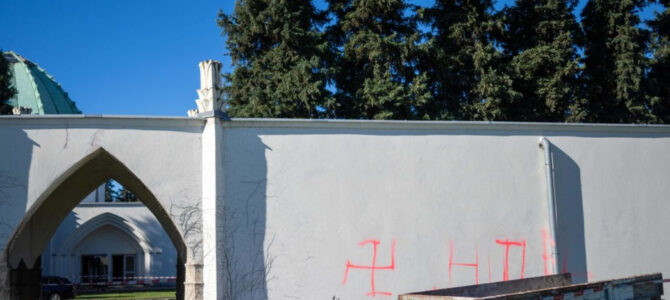
Jewish Cemetery Building Burned and Vandalized in Vienna
A building in the Jewish section of Vienna’s Central Cemetery was set ablaze and a swastika and inscription about Hitler were spray-painted on its outer walls on the night of October 31, according to multiple media sources. The fire consumer prayer books, Torah scrolls and pews. Over the weekend an Israeli flag was torn down at the entrance to the main synagogue in Vienna, the Stadttempel, without the removal of an Austrian flag flying next to it. The British-based Jewish charity Community Security Trust which monitors anti-Semitic attacks in Europe reports a 300% increase in Austria, a 240% increase in Germany and a 320% rise in anti-Semitic attacks in Great Britain since October 7. Attacks include the attempted fire-bombing of a synagogue in Berlin, the marking of Jewish homes and businesses with stars of David in Paris and the physical assault of at least one person carrying an Israeli flag by pro-Palestinian agitators in London, with Community Security Trust reporting 47 physical assaults in Europe overall between October 7 and November 3. November 10 to 11 is usually marked as the anniversary of the Night of Broken Glass or Kristallnacht when Nazis ransacked Jewish homes and businesses and assaulted and killed Jewish people people across Germany and Austria in 1938.
Latest report available here.
Jewish Chronicle report on attacks in Vienna here.
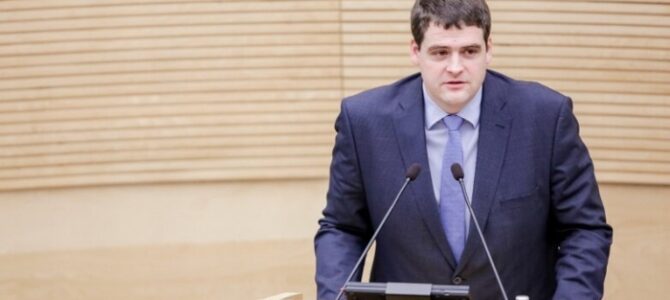
Žemaitaitis Update
Lithuanian MP Remigijus Žemaitaitis came under fire last spring for posting anti-Semitic and anti-Israel statements on facebook. He was removed from his party and condemned by other political parties, but when he refused to apologize and continued to make similar posts, the ruling coalition sought to impeach and remove him as a member of parliament. The opposition were initially cool towards the idea, but warmed to it after Hamas attacked Israel two weeks ago. The ruling coalition and speaker of parliament filed a complaint with the prosecutor general alleging the MP was sowing ethnic discord against Jews in Lithuania. The prosecutor’s office is calling the MP a “special witness” because he enjoys parliamentary immunity from prosecution. Žemaitaitis says the impeachment commission was formed outside the bounds of parliamentary regulations and is unconstitutional. All sides agree the commission’s initial findings will have to be adjudicated by a court of law, most likely Lithuania’s Constitutional Court, before proceeding to the next stage in the process. This is the latest installment in the on-going saga.
Impeachment Commission No Longer Inviting Remigijus Žemaitaitis to Testify: MP Intentionally Avoiding Attending Meetings
by Gailė Jaruševičiūtė-Mockuvienė, Lrytas.lt, October 23
As Lithuanian MP Remigijus Žemaitaitis continues to fail to appear at meetings of a special interpellation commission, the commission resolved Monday not to send any more summons to the MP.
“We won’t undertake additional measures. We will simply send an access link to all meetings we hold in the future and will provide the member of parliament the chance to connect and explain his position,” commission chairman Arūnas Valinskas said during the commission meeting held Monday.
Valinskas said Remigijus Žemaitaitis’s refusal to present his own explanations could be interpreted as a conscious effort to discredit the commission’s actions, and might include using loop-holes in the parliamentary statute for that purpose.
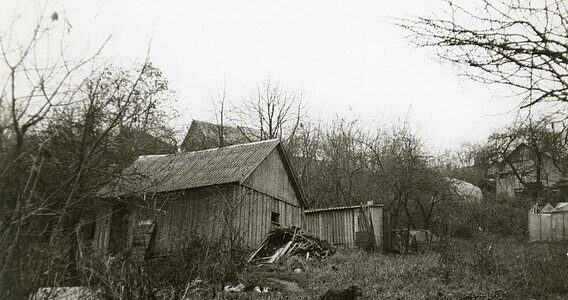
Šiauliai Ghetto Doctor’s Testimony Recalls Drowning “Illegal” Newborns
Photo: Šiauliai ghetto territory in 1988, unknown photographer, courtesy Ninth Fort Museum.
by Kristina Tamelytė, LRT.lt, October 15, 2023
“A young girl had to be killed so we decided to drown her,” doctor Aharon Pitsk wrote in his diary in 1942. He died just before the Šiauliai [Shavl] ghetto was “liquidated” with surviving ghetto prisoners sent on to Dachau and Stutthof. Šiauliai had a Jewish population of over 8,000 people before the Holocaust and only a few hundred survived.
The Nazis issued an order it was illegal for Jews to procreate so a newborn was a danger to the family, the community and everyone. Unborn children also posed a danger so ghetto officials encouraged and demanded women get abortions. This was considered the lesser evil, the death of one person instead of several. The children who were born were subject to poisoning. This often wasn’t lethal so “a more effective method” was found.
Pitsk called Lithuania “my homeland” in his diary.
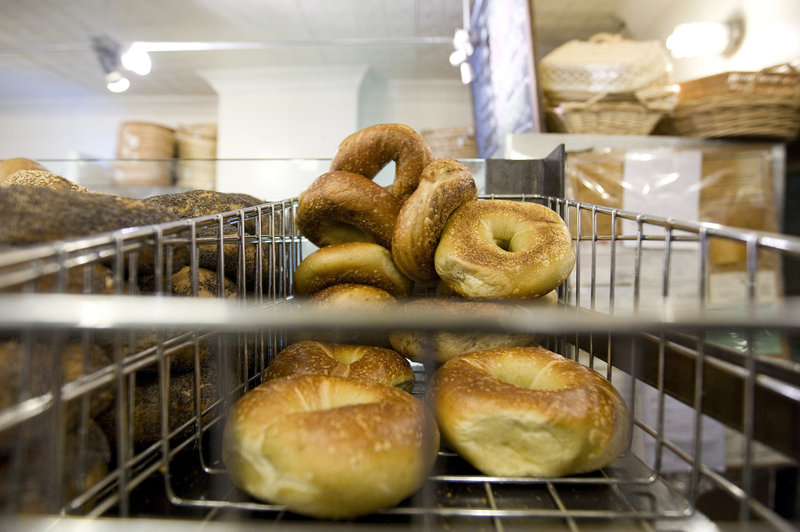
Latest Bagel Shop Newsletter
The latest issue of the Bagel Shop Newsletter has appeared in print and here in .pdf format.
Beigelių krautuvėlė-EN (1)Condolences
With deep sadness we report the death of Ida Vileikienė on October 17. She was born in 1942 in the Šiauliai ghetto. The Lithuanian Jewish Community sends our deepest condolences to her widower Petras, daughter Svajonė and son Donatas.

